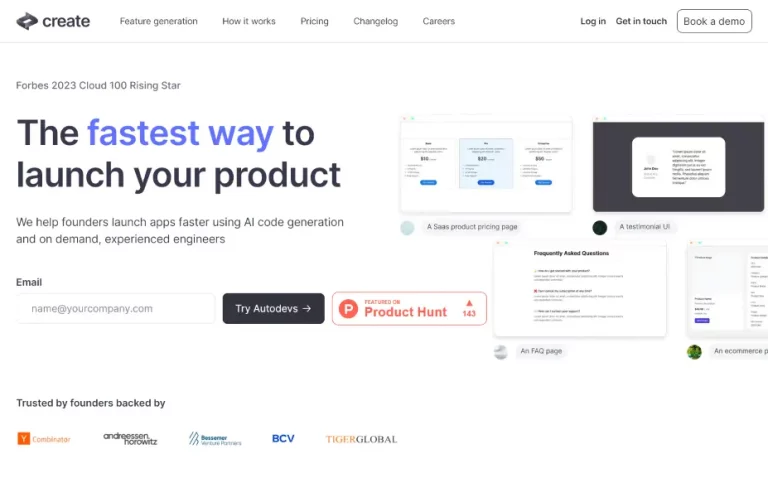Second.dev can be a valuable tool for developers of various skill levels looking to enhance their workflow and achieve faster development cycles. However, remember that AI assistance shouldn’t replace your development expertise and understanding. Use it strategically, evaluate its suggestions critically, and combine it with your own skills for impactful and successful web development projects.
Features:
- AI-powered developer bots: Leverage bots programmed for specific tasks like code generation, testing, and infrastructure management, automating repetitive tasks and improving efficiency.
- Pre-built components and templates: Utilize pre-designed components and code snippets to jumpstart development and save time.
- Real-time collaboration: Work on projects collaboratively with team members using the platform’s real-time editing and communication features.
- Cloud-based environment: Work on projects from anywhere with an internet connection, eliminating the need for local development environments.
- Security and compliance features: Benefit from built-in security measures and compliance tools for reliable and secure development practices.
Potential Uses:
- Front-end and back-end development: Build both front-end and back-end components of web applications with the platform’s comprehensive tools.
- Rapid prototyping and MVP development: Quickly turn ideas into functional prototypes and minimum viable products (MVPs) for validation and testing.
- Scaling development teams: Empower developers with AI assistance, allowing them to focus on complex tasks and scale team productivity.
- Managing legacy codebases: Utilize the platform’s capabilities to modernize and migrate older codebases more efficiently.
- Personal development projects: Experiment with web development and build personal projects with the platform’s guidance and automation.
Benefits:
- Increased development speed: Automate repetitive tasks and leverage pre-built components to significantly accelerate development timelines.
- Improved developer productivity: Reduce manual coding and free developers to focus on creative problem-solving and strategic tasks.
- Reduced development costs: Potentially streamline development processes and lower costs associated with traditional development methods.
- Enhanced team collaboration: Facilitate real-time collaboration and communication between team members, fostering efficient project execution.
- Simplified access to secure development practices: Benefit from built-in security measures and compliance tools, even with limited security expertise.









